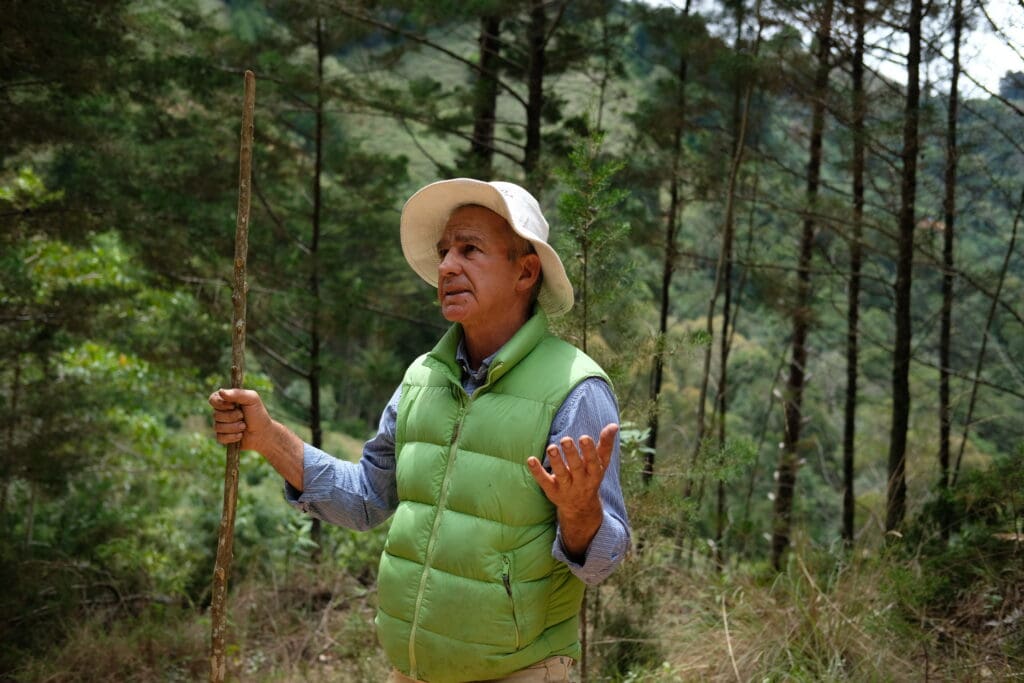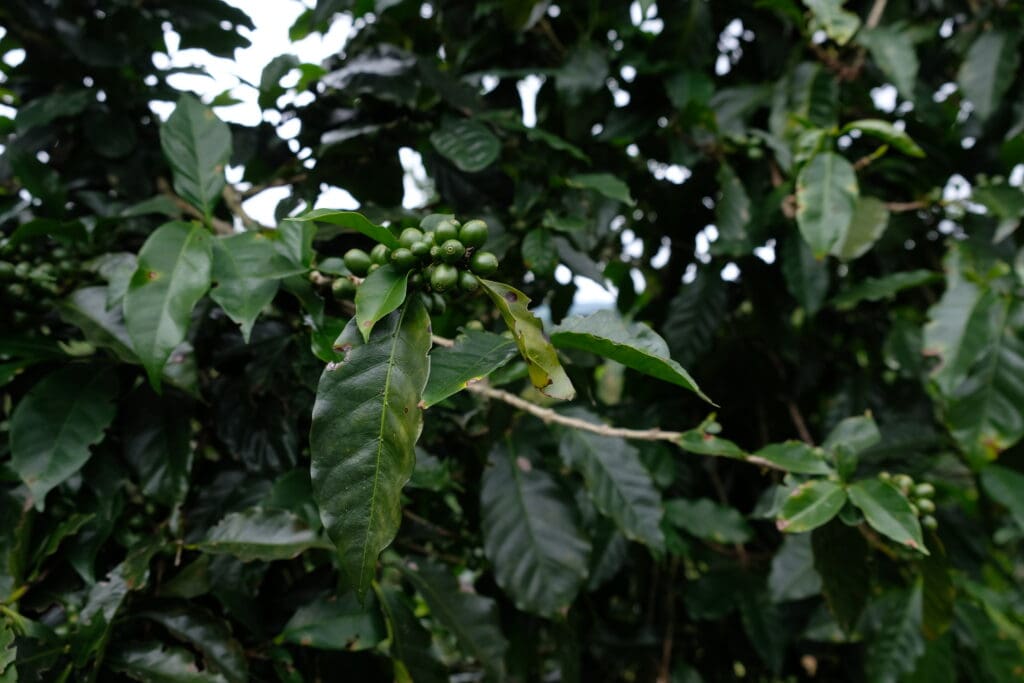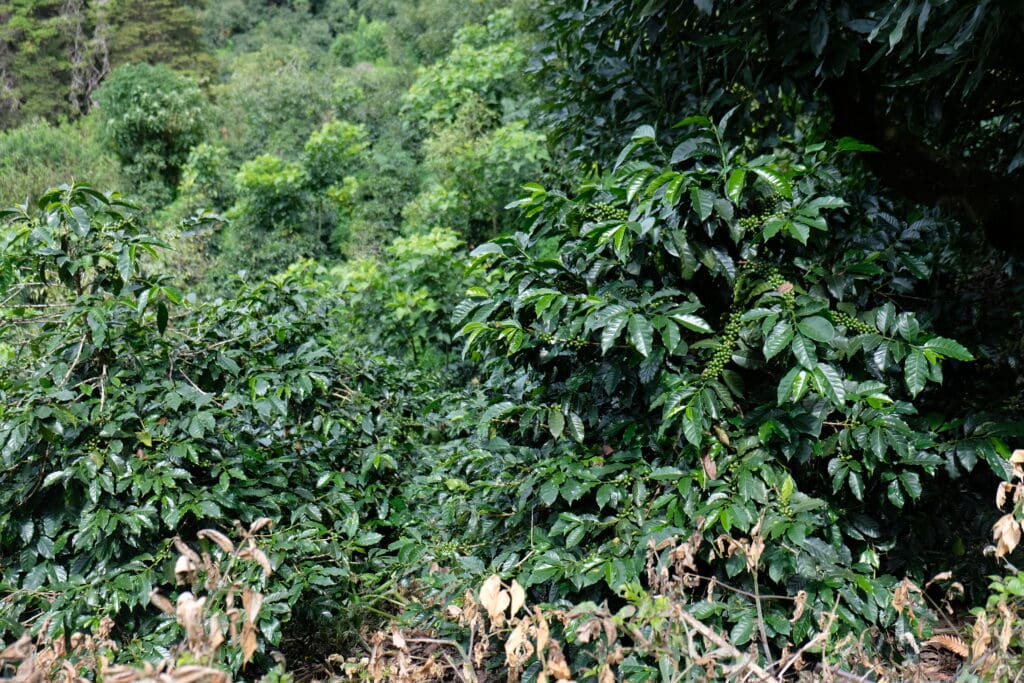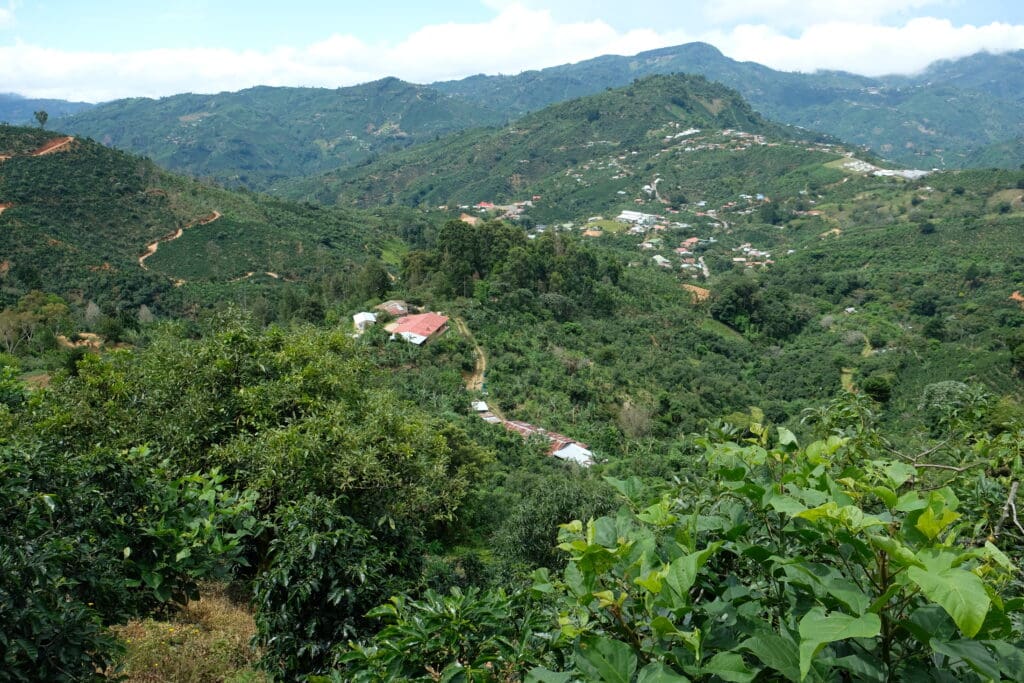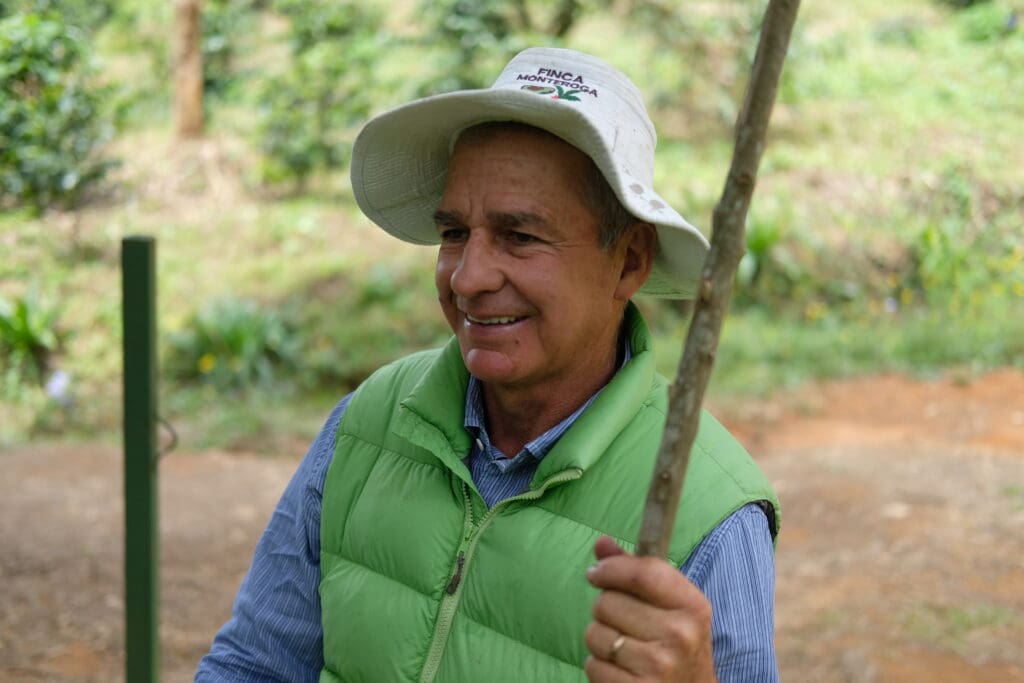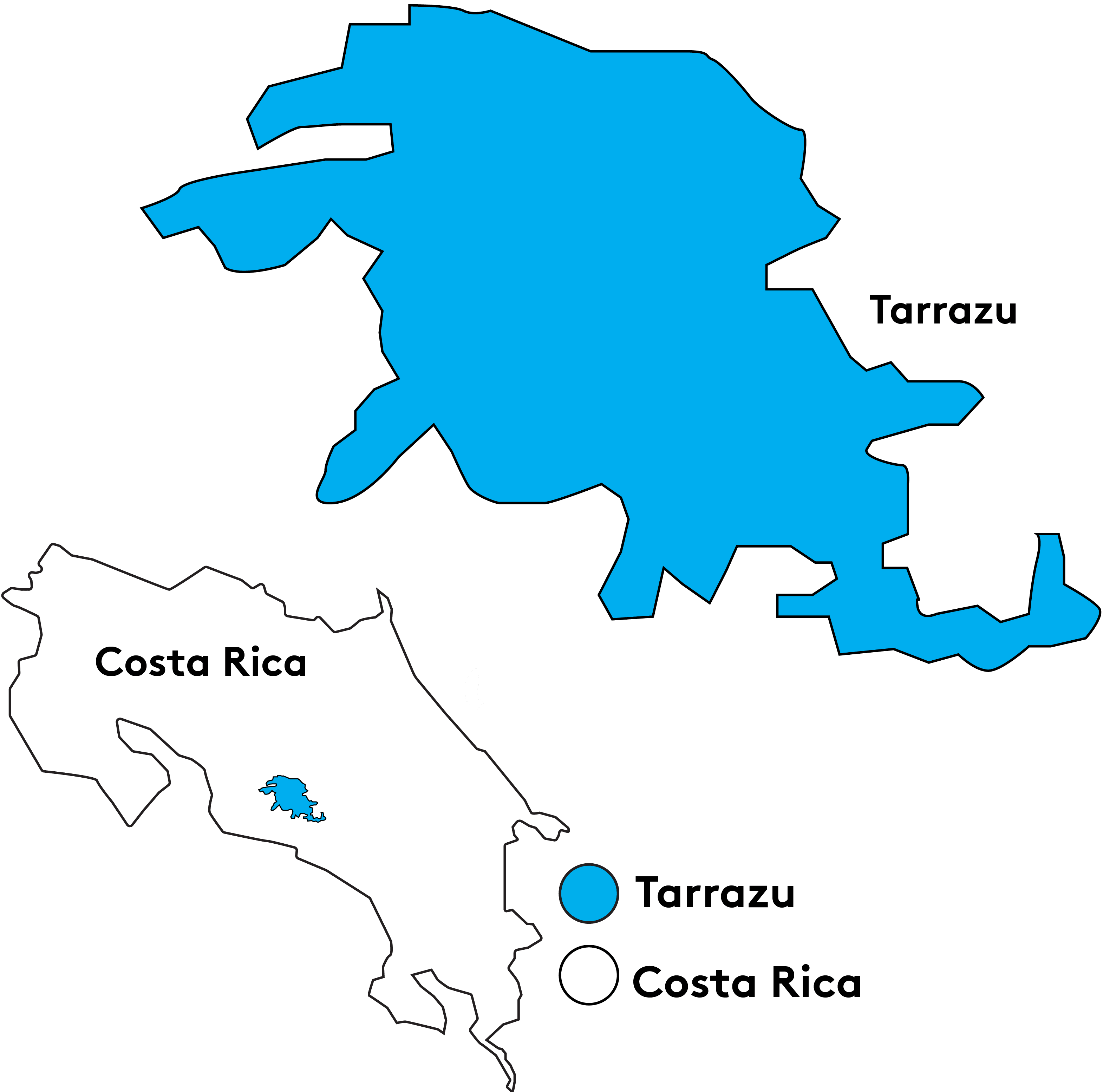Tío Juan Micromill is a family project which was started in 2015 by coffee producer Juan Rafael Montero Gamboa with the intention of improving the quality of the coffee from his family farm, Monteroga – Casas de Abajo. Juan Rafael has been taking care of his land since the 1960s and works to cultivate coffee in a harmonious way with nature.
Juan Rafael believes that every living organism, no matter how large or small, is part of a habitat and ecosystem. This means that his land, where he lives alongside hundreds of organisms, must remain perfectly tuned to thrive. His belief in this harmony guides the way that he works with his soil and crops, knowing that coffee quality depends on the way which producers work in their ecosystems.
Juan Rafael’s production practices are designed to be sustainable and to consider his environment. He analyzes the soil regularly, producing his own organic fertilizers called “bioles”. These foliar-type fertilizers are created through anaerobic digestion of plants, and are nutrient-rich enough to fulfill most of the nutritional requirements of his coffee. All of the weed removal on the farm is done by hand, and Juan Rafael also chooses not to use any herbicides on his plants.
This Catuai microlot underwent Natural processing at Tío Juan Micromill. Harvested cherries are first floated in fresh water to sort out any defects and impurities from the harvest before being spread out in thin layers on raised drying beds. Cherries are dried in direct sunlight through the morning and afternoon thanks to the location of the mill’s drying beds, and the beds are covered each night in plastic to avoid unwanted moisture collecting on the cherries. The coffee is dried for approximately four weeks to reach the ideal humidity, at which point the coffee is then stored in the mill’s warehouse for a resting period. The cherries are finally milled and prepared for export in a neighbor’s dry mill where the coffee is rigorously sorted for screen size, color, and density.
